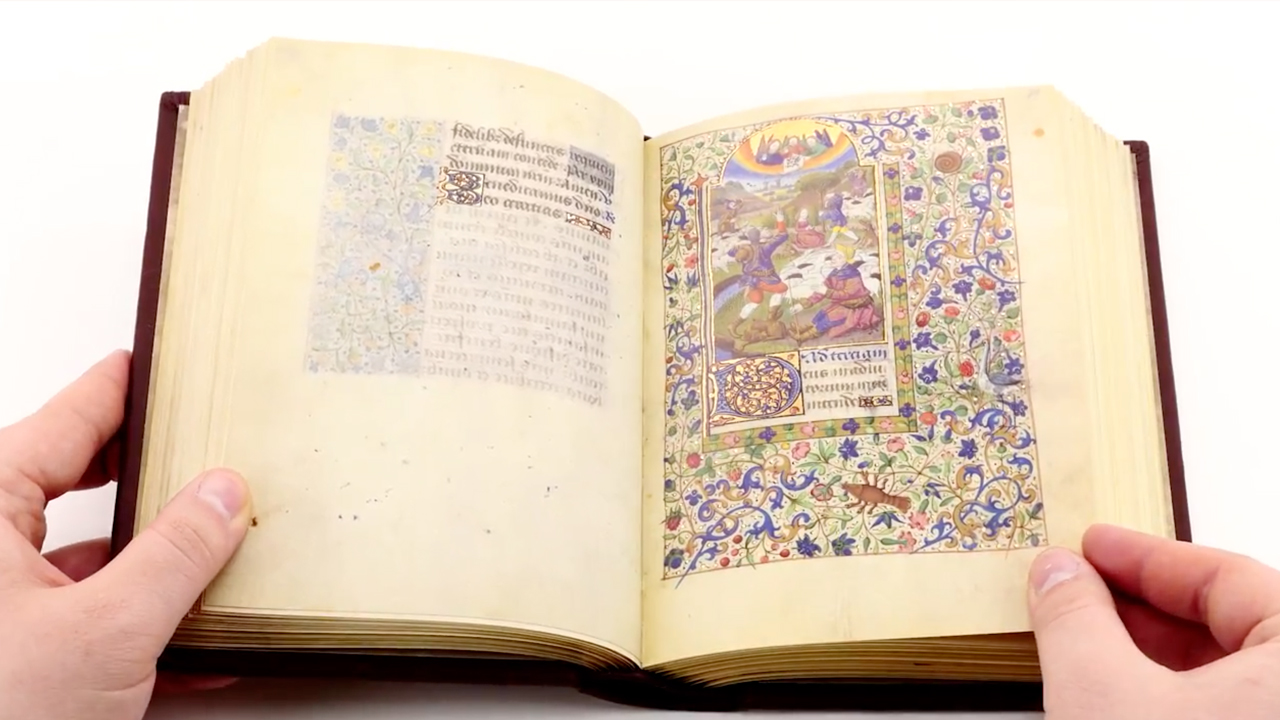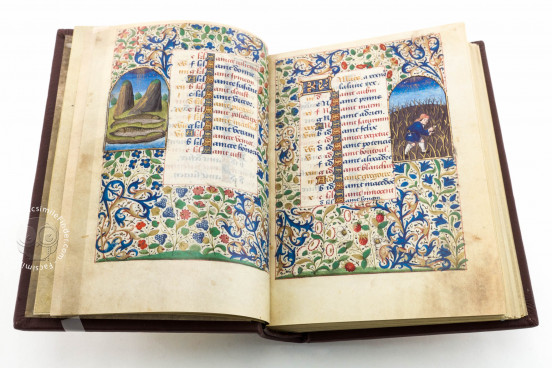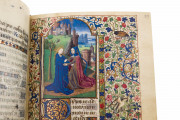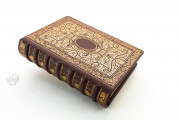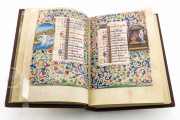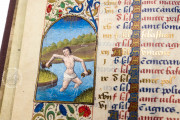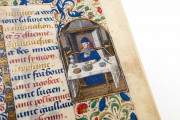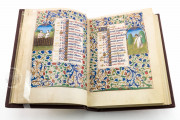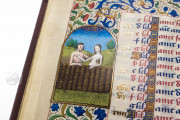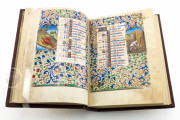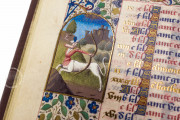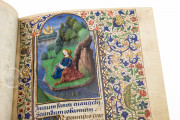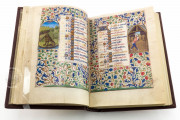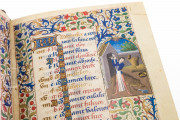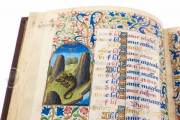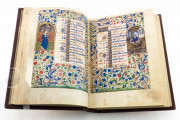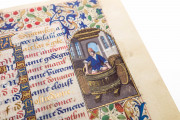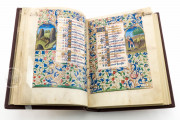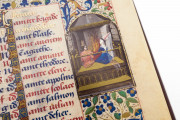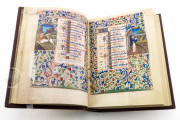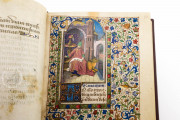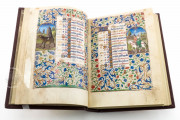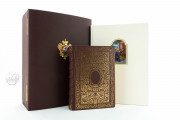Among the several dozen French books of hours kept in the Moscow collections, the Moscow Book of Hours stands out as one of the most magnificent. It was decorated in 1470s Paris and, judging by the coat of arms, its patron was a person of high rank. Unfortunately, both crest and motto are scraped off – subsequent owners of manuscripts often sought to erase all traces of their predecessors. On one of the leaves of the Book of Hours is a praying patron on a kneeling stool; symbols of wealth and nobility are recurring themes in the miniatures.
Miniatures With a Tormented Past
Each part of the Moscow Book of Hours contains a large miniature cycle, for a total of seventeen. Unfortunately, twelve miniatures have gone missing, including the "Adoration of the Magi" and the "Flight into Egypt" from the Office of Mary, almost all of the Passion cycle, the Office of the Dead and some suffrage miniatures.
It is conceivable that Western collectors recklessly removed the relevant pages in the 19th century, a time when collections of medieval art and book miniatures had become fashionable in Western Europe. Fortunately, the manuscript still contains 24 large miniatures, 24 illustrations (calendar) and is provided with 173 pages of exquisitely decorated edge.
The fleuronnée initials shimmer with gold and colors, and are filled with plant ornamentation; the white space at the end of the lines is filled, according to tradition, with line fillers of red, blue, and gold ornament. Framing both miniatures and text are the scatter borders (typical of this age) decorated with naturalistically rendered flora and fauna.
The Artists of the Moskauer Stundenbuch
At least two painters were involved in the creation of the Moscow Book of Hours: landscapes and interior scenes prove that both Masters had certainly been influenced by the Coëtivy Master, one of the leading Parisian book painters of his time, known for his close relation to Dutch painters.
It can be assumed that, just like any other painting studio, the workshop of Master A and B had at its disposal a variety of drawings and templates such as the Master of Dreux Budé, and the selection of these sample sheets was so large to possibly contain also Bedford Master's templates. Both may have significantly influenced the pictorial style of the Moscow Book of Hours Masters.
Examples of Dutch Influence
The miniature of "Mark the Evangelist" (fol. 24) shows a further re-interpretation of the architectural design that the Masters have taken over from their teacher. Here, the scenes are consciously extended by architectures with a great number of people. Such complicated architectural forms were very popular, especially with Rogier van der Weyden and the Dutch masters.
Landscapes and settings show a Dutch influence with its eye to detail and bucolic-like scenes – examples are the "Visitation" (fol. 59), and "Lukas paints the Madonna" (fol. 19v). The Dutch innovation in European painting is present for instance in the miniature "Annunciation” (fol. 37), where the Virgin Mary meets the heavenly messengers in her home with Joseph, rather than in a church.
Another pictorial influence can be detected in the night scene of "Christ on the Mount of Olives” (fol. 209) where Jerusalem appears similar to a medieval French town according to Parisian book illumination. The artist disengages from tradition choosing not to represent the cup of suffering next to Jesus, but having it handed to him by an angel, thus following the words of the Evangelist Luke: "Then an angel from heaven appeared and gave him (new) power" (Lk. 22.43).
An Instance of Golden Gothic Script
The Moscow Book of Hours is a fine specimen of Gothic script. The text features the typical abbreviations of the script. The letter f extends slightly below the baseline. Its sister letter s is represented in two forms: the round s, primarily used at the end of words, and the straight s, sometimes descending below the baseline, used at the beginning of words.
The latter, made in no more than two strokes, takes less space than normal round s. Minims do not have a diamond-shaped serif at either the headline or the baseline. The manuscript features a specific form of the “Rücken” -g (g with a back), in which the two vertl strokes make the upper lobe cross the upper horizontal stroke (fol. 77v). The lower lobe is left open as it lacks a closing hairline. This form betrays a cursive influence.
We have 1 facsimile edition of the manuscript "Moscow Book of Hours": Moskauer Stundenbuch facsimile edition, published by Wissen Media Verlag GmbH, 2007
Request Info / Price
